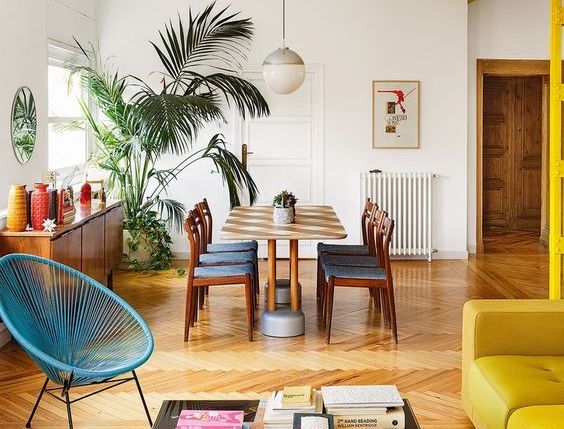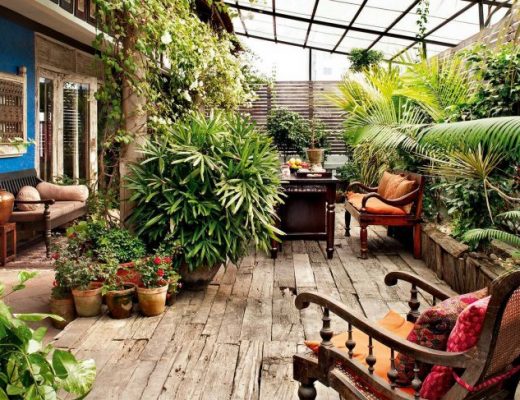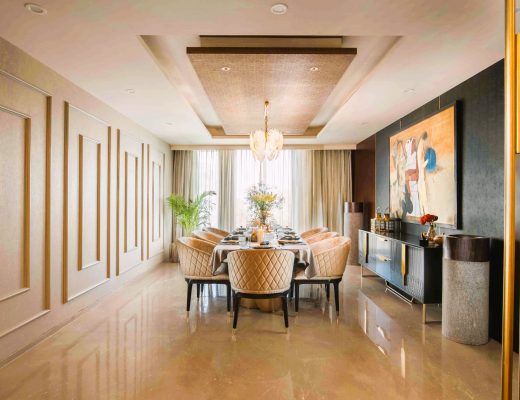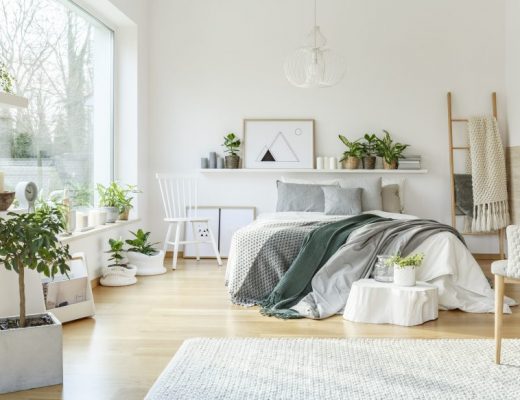Eco-friendly design refers to the use of products that contribute to green living and practices that help conserve natural resources. But it is not just confined within a mere trend or term anymore, rather a process homeowners can attempt to contribute to earth’s health at home.
The interior design of a home sure should have an aesthetically-pleasing ambience, but should also have some green & eco-friendly quotient to it. Eco-friendly interior design acts as a key pulse of a better living condition for the occupants as it promotes a healthy, hearty and nourishing lifestyle!
Here in this blog, we bring to you six eco-friendly interior design ideas that will help you to make this significantly pressing alteration.
Lighting & Layout
Lighting has a direct impact on the quality of your indoors. The right lighting can make all the difference in a space and nothing works as best as relying on natural light to promote energy efficiency. Maximizing natural sunlight into the interiors can help save electricity and even provide a healthy dose of vitamin D. A convenient trick is to arrange spaces like bedrooms and bathrooms facing north (with less sun) and kitchens and living rooms facing the sunnier south. Enhance lighting usage by painting the interiors with light colours. Bring the outdoors in by freeing windows of heavy curtains and blinds to make your spaces look airy and breezy.
Even if you don’t have large windows, bringing a variety of lighting sources like table lamps and pendant lamps made of eco-friendly materials such as bamboo and tree branches will serve the purpose. Additionally, switching to CFL or LED light bulbs will help cut both your bills and energy consumption and contribute less to greenhouse emissions. Talk about a win-win situation! Furthermore, instead of incandescent bulbs, use low-voltage fluorescent or halogen bulbs or even seaside lanterns for a coastal touch to your interiors!
Reuse. Reduce. Recycle!
An essential aspect to address while approaching an eco-friendly interior design is the 3R’s: reuse, reduce and recycle. To attain the 3R’s, all you have to do is be minimalistic, recycle non-biodegradable materials and reduce the use of harmful substances in your everyday life. Here are some ways for you to easily do so.
For example, you can refurbish raw material that lies in forgotten corners of your household before buying anything brand-new. Get creative and reupholster chairs, sofas and cushions employing fabric that already sits inside your closets. Turning old wooden doors to trendy centre tables, window frames or knick-knacks is also an interesting trick. Repurpose glass jars into light fixtures or planters and find recycled bricks to enhance your outdoor walls. Doesn’t sound so hard, now does it?
Again, replace granite and quartz to utilize recycled glass as wall tiles for your bathroom, lighting panels or tabletops. You can also consider integrating recycled metal into your interiors to give it an industrial effect.
Ventilation and natural air purifiers
Biologically, human beings associate nature with life and wellbeing. Which is why green spaces effectively activate survival instinct, act as stress relievers and even help in uplifting one’s mood. Also, bringing nature indoors helps purify the air quality inside – improving it for the residents. Some ways you can incorporate greens into your interiors are via rooftop, veranda, vertical and kitchen gardening. But eco-friendly gardening requires some specific procedures.
To introduce such gardening, it is necessary to follow steps such as using organic growing methods & planting varieties of local plants like money plants, snake plants, lucky bamboos, rubber plants and herbs, instead of exotic ones. Another vital step is to use biodegradable waste as compost for gardening and to opt for greener alternatives instead of using harmful pesticides or chemicals. With a properly designed ecological interior design, it is possible to get uninterrupted airflow throughout your entire home!
For better air permeability, effective ventilation also helps to let poisonous gases such as carbon monoxide and nitrogen dioxide from heaters/stoves out. Hence the placement of windows and doors have domineering effects on proper ventilation of a home.
Non-VOC furnishing and flooring
Furniture is an integral piece of what makes a house a home. But one small decision of being environmentally sensitive can bring a huge change to this particular aspect. Furniture often contains oil or wax-based finishes and harmful elements like formaldehyde & VOCs which are toxic for both your health and the environment. However, there are a few healthier substitutes for you to select from according to your needs.
You can opt for furniture made from a material that is responsibly harvested from renewable resources and has water-based finishes. Materials like wood and rattan make a great choice for eco-friendly furniture. Major plus – rattan has a rich history in Bangladesh hence you’d also be supporting local businesses and in turn reduce the carbon footprint!
You can go another step further and reconsider applying the same principles of your ecological standpoint to your flooring as well. Instead of going for vinyl flooring, opt for limestone tiles, wood, cement or even something as exceptionally strong as bamboo. Incorporating bamboo into your modern home interiors by applying them to your bathroom and kitchen floors can also create an appealing tropical ambience.
Fabric for rugs & curtains
The list of household items that ought to be crafted from natural materials goes beyond furniture. Consider biodegradable and organic materials when you shop for a textile element for your home. Synthetic materials like nylon, acetate or polyester are all just different words for plastics. Fashioning pillows, mattresses, rugs, carpets and curtains of organic materials cuts down on the production of synthetic products. Selecting organic fabrics like cotton, jute, rattan or even silks can be some alternatives.
Rugs and carpets made of jute add calming earthy tones to your interiors while proclaiming your commitment to sustainability. Rattan and bamboo materials are also some flattering choices for you to brush some ethnicity into your interiors. These elements are renewable, fire-resistant, made of natural fibres and more importantly can be sourced locally. What an eminent way to shop locally and support small local businesses!
Additionally, purchase some organic cotton fabrics for any of your home textiles and dye them with the juices of coloured fruits, flowers and vegetables like lemons, java plums or butterfly pea flower, just by simmering the fabrics in a pot of water & vinegar. This fun DIY adds a sense of individuality to your home decor!
Paint
Walls undoubtedly add the most significant attribute to any home and introducing an eco-friendly option on them makes the most impact. Some wall paints contain toxic volatile organic compounds (VOCs). VOCs are adverse substances that often cause health problems like allergies, nausea and irritation because of harmful pigments in it. You are usually smelling the off-gassing or the fumes of the chemicals when your walls are freshly painted. But applying coats of water-based non-VOC organic paint instead of oil-based paints can make your interior eco-friendly. Select paint with labels that read “Low Odor/VOC” and is also exempt from chemicals like acetone or formaldehyde.
It is also necessary that we grow a habit of using reusable paint trays made of recycled elements and bamboo paintbrushes rather than buying man-made fibre ones. You can also opt for organic wallpapers created out of waste material, recyclable elements, and natural dyes. But, at times, wallpaper adhesive, paint thinner can also contain VOCs so it is worth sourcing one that does not contain them.
All in all, with numerous eco-friendly decor options to pick from, it is time we became cognizant of the importance of an environmentally friendly dwelling. All we need is to start adapting to the idea of living with bare essentials and adhering to a fresh mindset. The above discussed are a few ways to get you started!
For professional assistance in incorporating eco-friendliness into your interiors, speak to a designer at Sheraspace!
Read this blog in বাংলা






No Comments